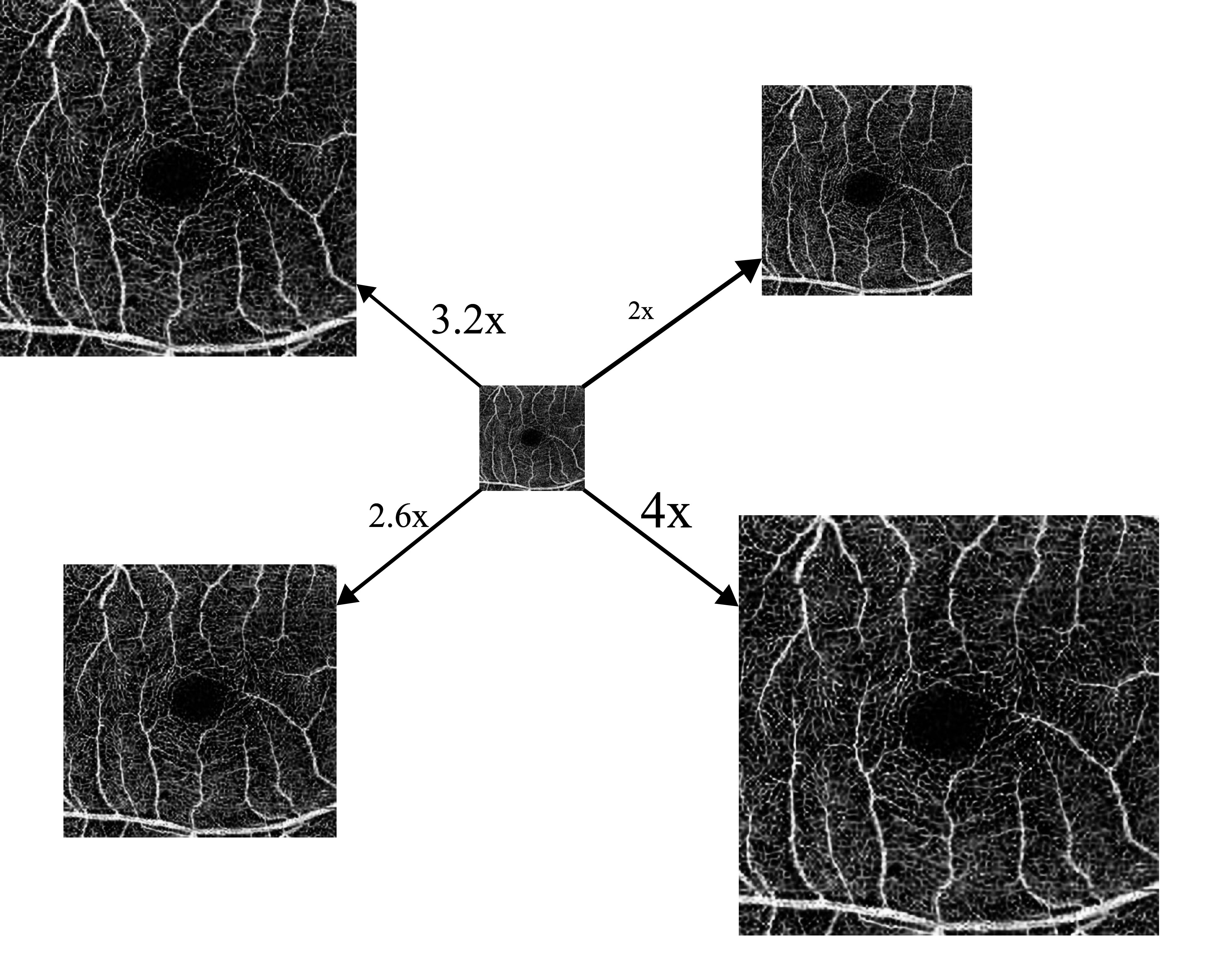OW-SLR:Overlapping Windows on Semi-Local Region for Image Super-Resolution MDPI: J.Imaging 2023, Vol. 9(11), p.246
- Rishav Bhardwaj University of Waterloo Canada
- Janarthanam Jothi Balaji Department of Optometry Medical Research Foundation, India
- Vasudevan Lakshminarayanan University of Waterloo Canada

Abstract
There has been considerable progress in implicit neural representation to upscale an image to any arbitrary resolution. However, existing methods are based on defining a function to predict the RGB value from just four specific loci. Relying on just four loci is insufficient as it leads to losing fine details from the neighboring region(s). We show that by taking into account the semi-local region leads to an improvement in performance. In this paper, we propose applying a new technique called Overlapping Windows on Semi-Local Region (OW-SLR) to an image to obtain any arbitrary resolution by taking the coordinates of the semi-local region around a point in the latent space. This extracted detail is used to predict the RGB value of a point. OW-SLR can generate upscaled OCT-A images of any random resolution. This technique outperforms the existing state-of-the-art methods when applied to the OCT500 dataset. OW-SLR provides better results for classifying healthy and diseased retinal images such as diabetic retinopathy and normals from the given set of OCT-A images.
Predicting RGB value of a random point

Overlapping Windows

The first iteration of overlapping windows, where the window size=M-1 (M=6). Assuming the feature map is of negligible depth and four windows are positioned at the four corners of the feature map.
Results

A 96×96 patch is taken and its size is reduced to 24×24 (first row), 32×32 (second row) and48×48 (third row) using bicubic interpolation. Our architecture uses the same set to weights reproduce the given results. However, others require different set of weights for a newer scale to be trained on.
Acknowledgements
The website template was borrowed from Jon Barron and Zip-NeRF.